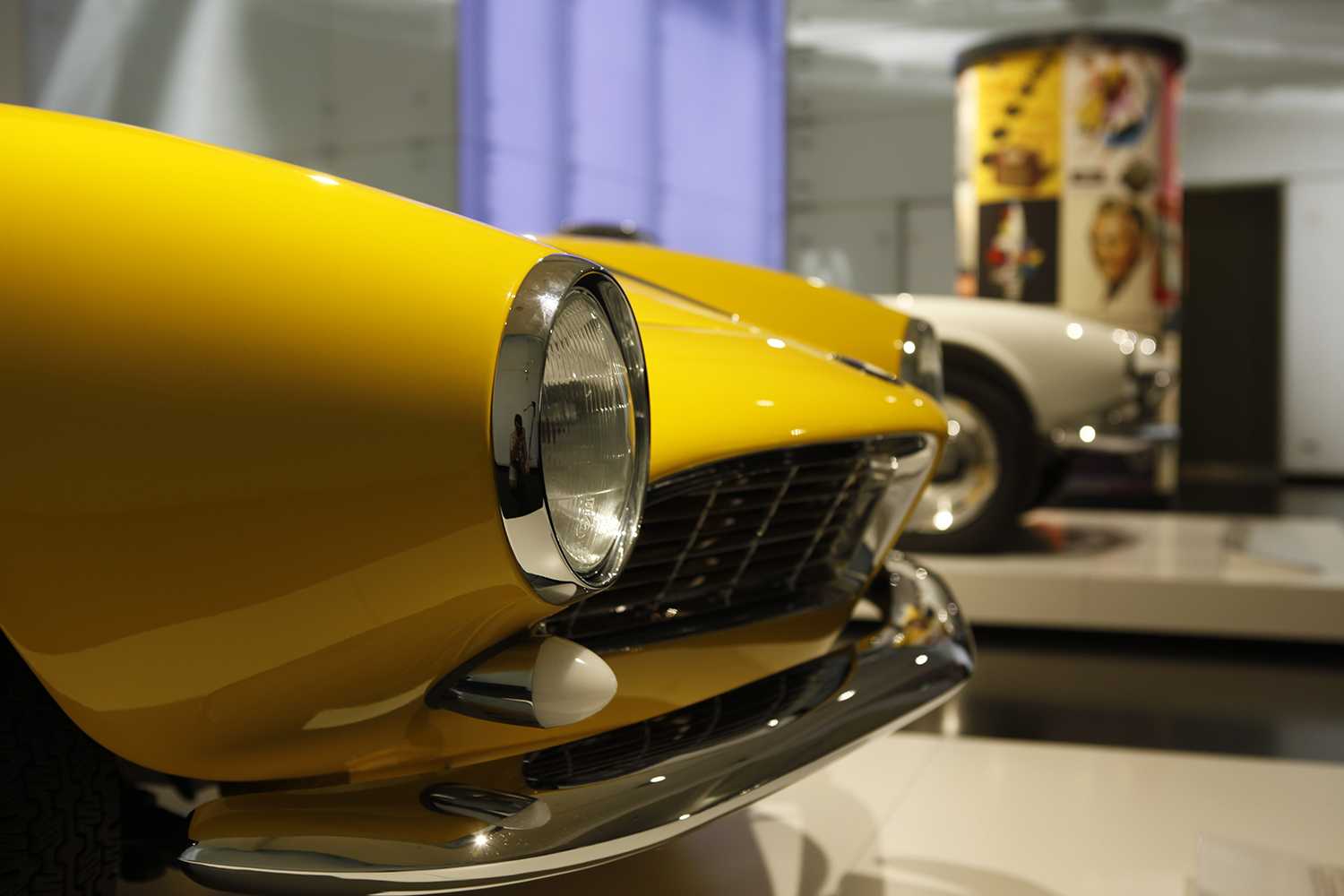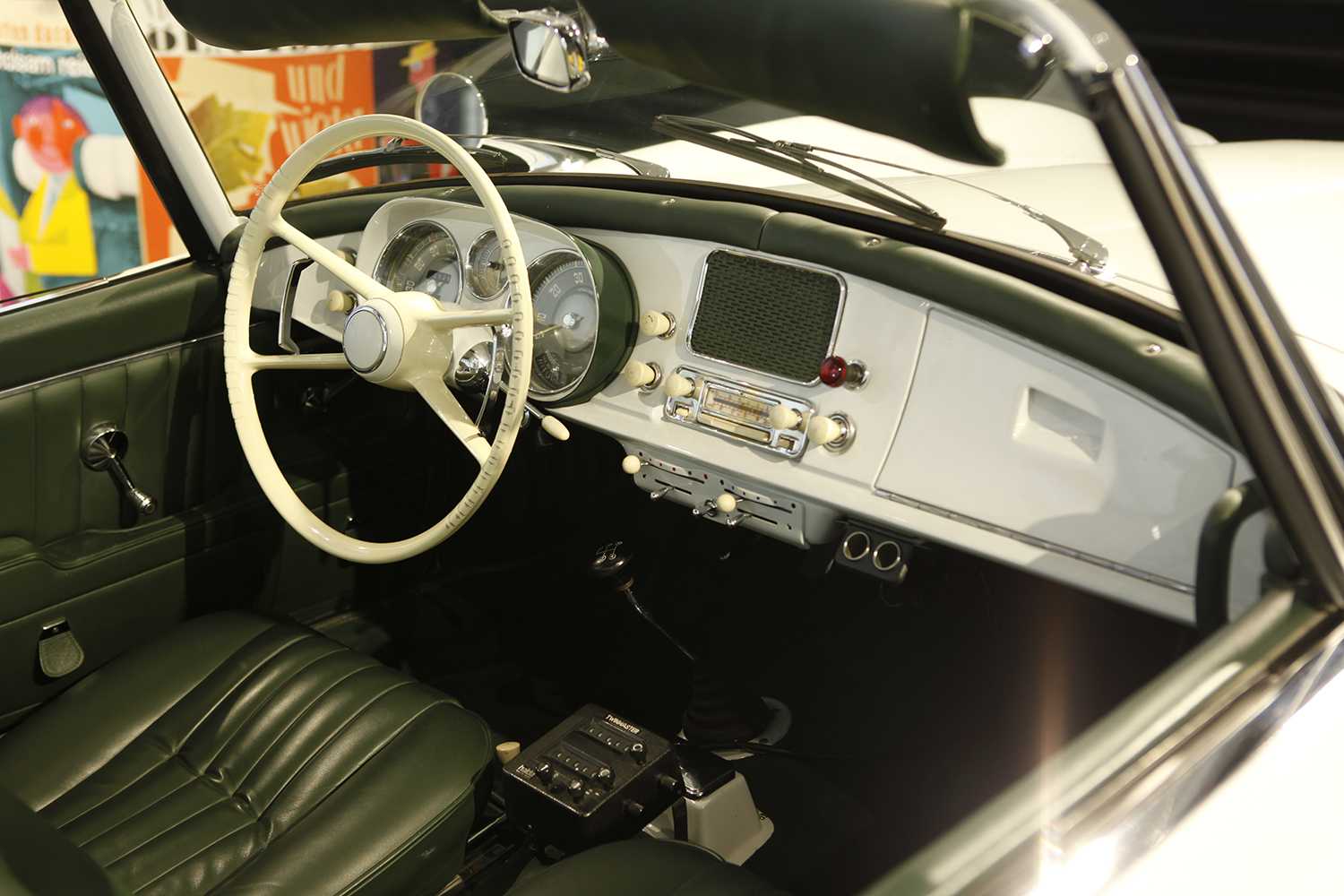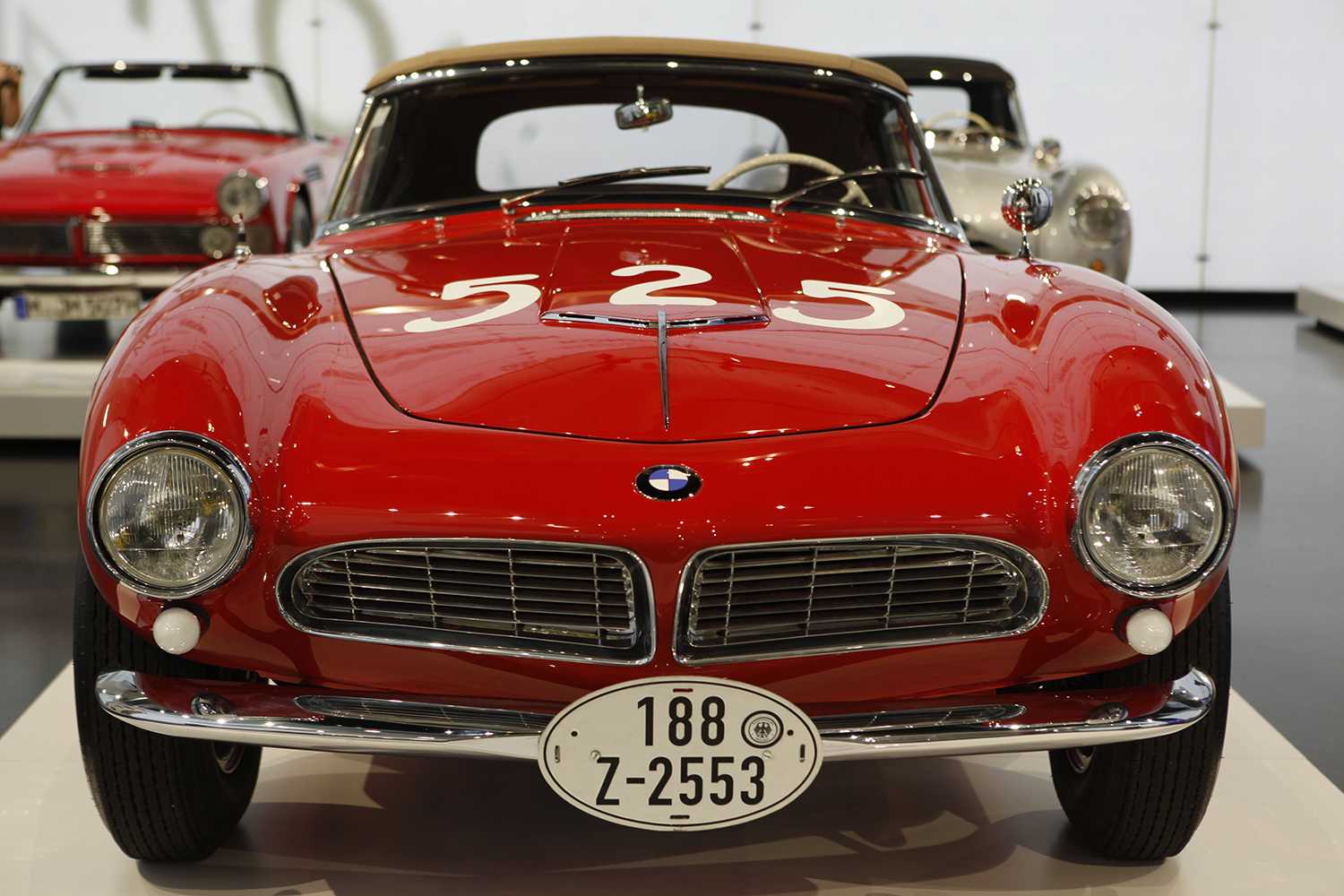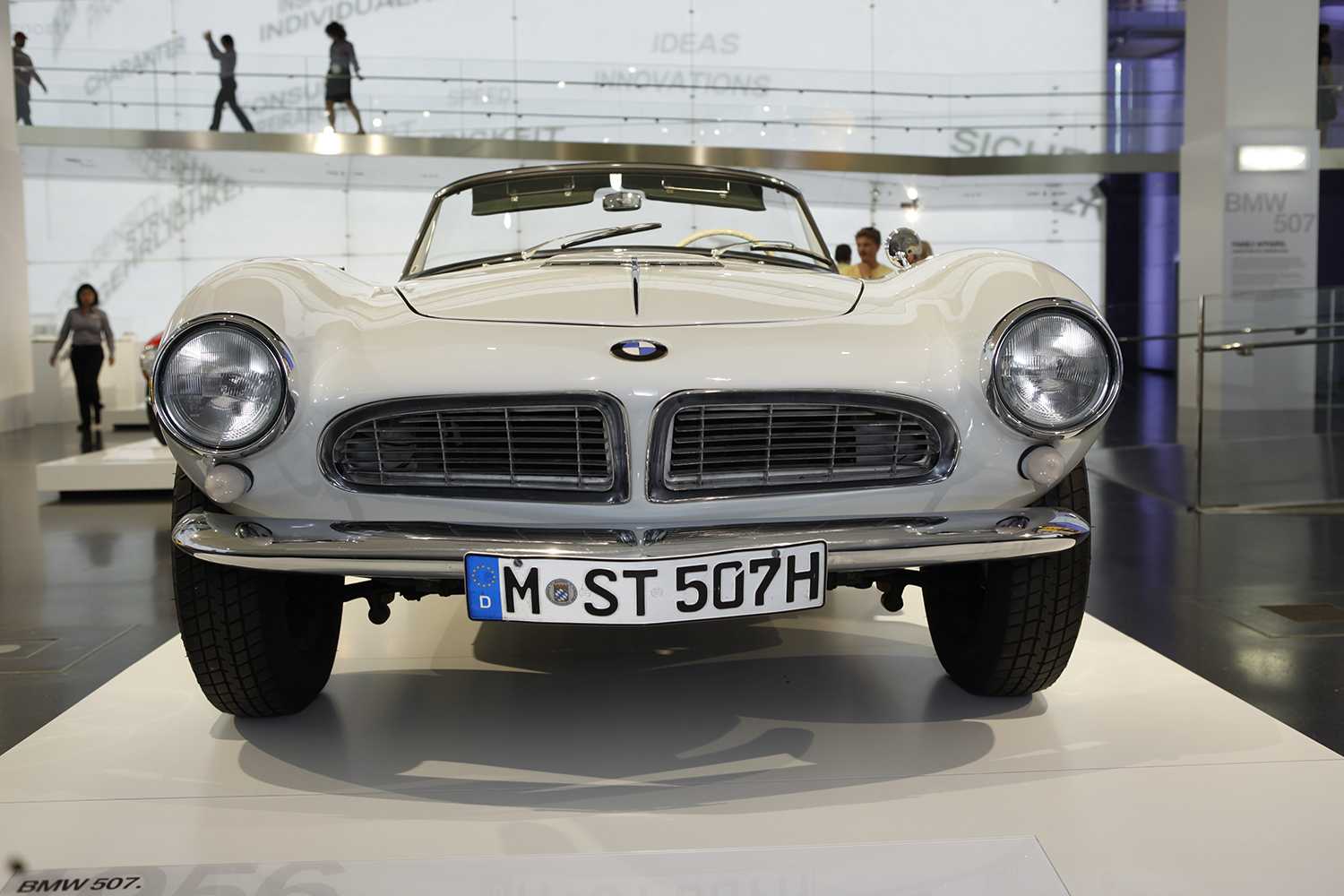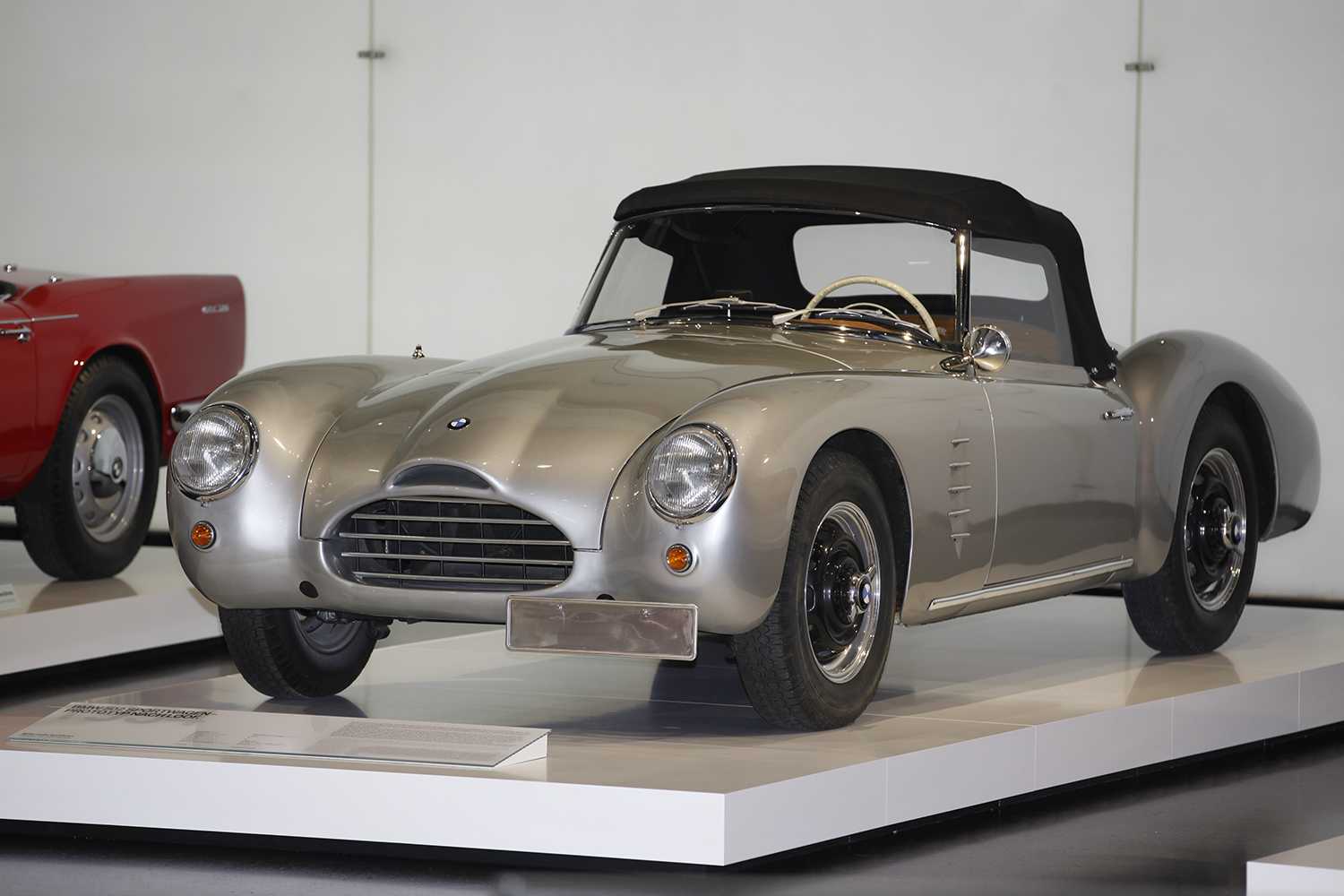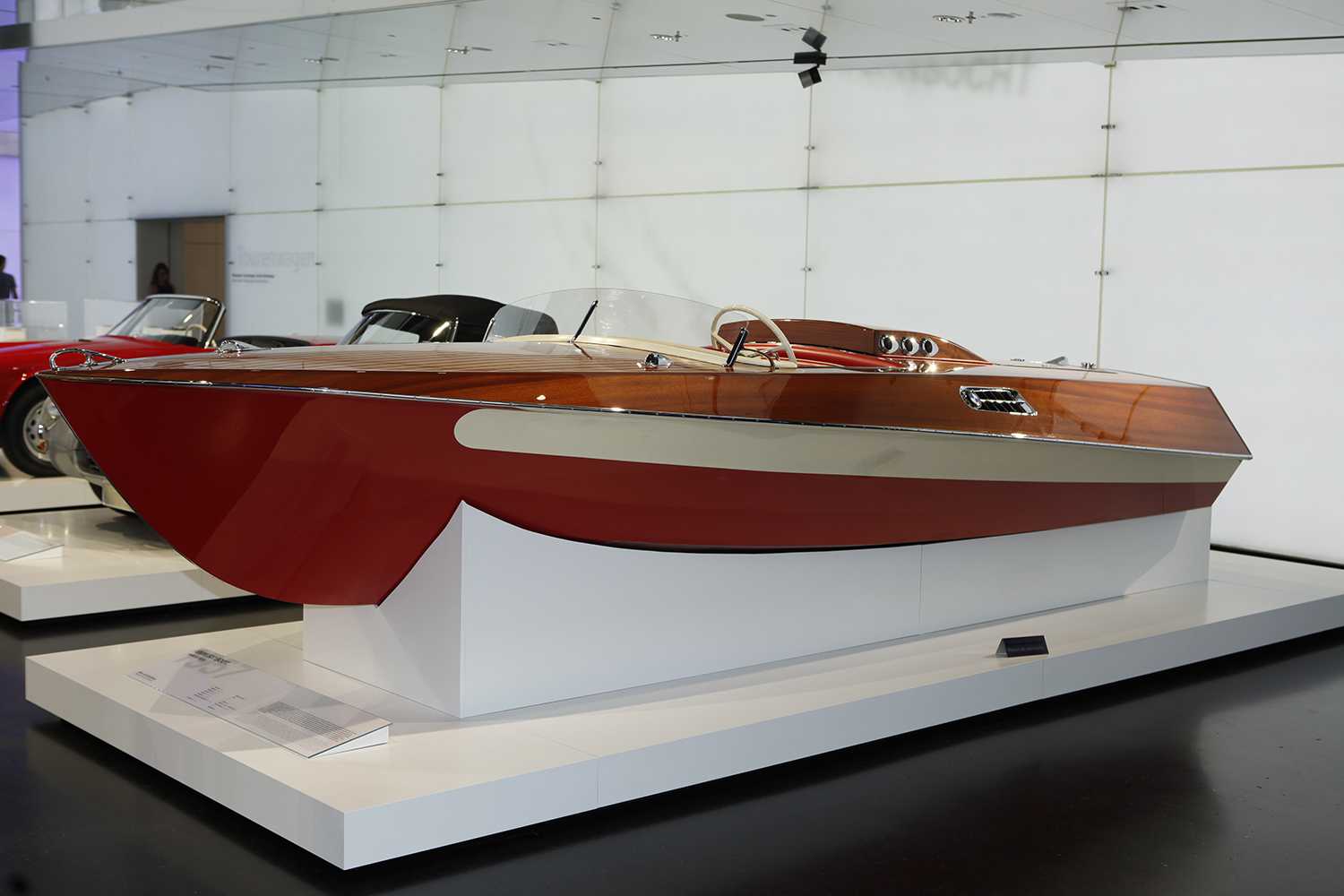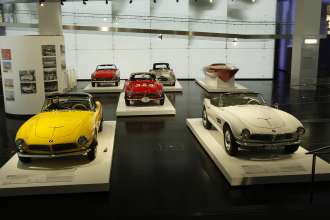The BMW 507 is regarded the world over as one of the most handsome sports cars of the 1950s, if not one of the most beautiful automobiles – of any kind – ever built. Its unveiling at the International Motor Show (IAA) in Frankfurt in September 1955 was greeted by a gushing press as a “BMW sensation” and the “dream car from the Isar” (the river that flows through Munich). Today, 60 years on from that debut appearance, the BMW 507 has lost none of its allure. Quite the contrary, in fact, since admiration for this sculpture on wheels continues to swell. And that’s reason enough for the BMW Museum to honour the 507 with a special exhibition.
In the 1950s BMW set about building on the rampant success of its 328 with an elegant sports car that started life known as the “Typ 528” in company parlance, or by its type designation “507a”.
Ernst Loof (1907–1956) was the man responsible for this aspiring project from 1954. Loof had headed up BMW’s sports car department before taking over at the Nürburgring branch of the company’s R&D activities in 1953.
Using the BMW 502 as a basis, Loof and his team developed a prototype now referred to as the BMW 502 sports car, which was powered by a 2.6-litre V8 engine. Characteristic features included a curved windscreen, a front air intake lacking any kind of decorative grille, an air scoop on the bonnet, crescent-shaped air vents carved into the car’s flanks and a soft-top roof. The car was also given wheels with white-walled tyres, chrome rims and central locks, and the two seats were set conspicuously close together. Only at a later stage was a radiator grille added at the front end.
In September 1954, with testing at the Nürburgring yet to get under way, Loof revealed the prototype to a public audience at a concours in Bad Neuenahr. It was awarded a gold medal, but also prompted criticism within the motoring press. One of the loudest dissenting voices belonged to Max Hoffman, an importer of European sports cars into the USA, who gave the design as it was little chance of export overseas.
Hoffman brokered a meeting between the BMW development department and Albrecht Graf Goertz. Still relatively unknown at the time, Graf Goertz was ultimately responsible for the car’s final design – and his captivating roadster would represent a breakthrough moment. Only 20 weeks passed between the submission of initial sketches in late October 1954 and the signing off of the body design in March 1955.
“The mechanics at BMW were fantastic to work with,” Graf Goertz later recalled. “If I told the chap in charge that I needed more space in the engine compartment so that I could lower the bonnet line, he just said ‘no problem’, and a few days later the engine would be five centimetres lower down. This allowed me to turn my ideas into reality without impediment. The BMW 507 became every inch how I wanted it to be.”
Graf Goertz created the 507 as a dynamic roadster, its design all timeless elegance, its proportions compelling in their clarity, its nose pointing down the road like an arrow. The sweeping bonnet led the eye to an arresting combination of slender waist and muscular rear haunches. The car also turned heads with several unique details such as the gills on its flanks, “horizontal” kidneys for the radiator grille – a new feature for BMW, slim “vertical” kidneys having previously been a Bayerische Motoren Werke signature – and the modern impression created by the driver-focused cockpit. The BMW 507 was not only a pure-bred roadster, but also a long-distance operator of sporting intent; it was fast, elegant and comfortable, yet it also boasted real dynamic ability.
The BMW 507 was powered by a spin-off of the V8 engine from the BMW 502, with 3.2-litre displacement and 150 horsepower. A noteworthy characteristic of the 507’s mechanicals was that the transmission was not bolted directly to the engine – as was customary – but positioned quite a bit further back by means of a short drive shaft. This improved weight distribution had the rather handy side-effect of allowing the clutch to be replaced without the need to remove the engine or transmission.
Despite its exceptional roadholding and powerful, torquey engine, race action was not at the top of the agenda when the BMW 507 was conceived. However, that did not deter Venezuelan driver Enrique Muro from entering the roadster in the 1957 Mille Miglia in Italy. The original Mille Miglia, held between 1927 and 1957, saw the competitors cover more than 1,000 miles over public roads and was the longest and toughest endurance race of its era. The 1957 edition of this epic event took place on 11/12 May and was to be its final running in the traditional format. Muro lined up in the Vetture Sport class for cars over 2,000cc and was given start number 525. Sadly, the car – carrying oval-shaped German customs plates – did not make it to the finish. But just by crossing the start line it provided a legacy from which current BMW 507 drivers continue to benefit. The appearance of the 507 in the original Mille means today’s owners are eligible to apply for a place in the modern version of the event, now arguably the world’s most prestigious classic car rally.
Inspired by Albrecht Goertz’s stroke of genius and the compelling engineering beneath the car’s skin, a number of the designer’s contemporaries – the legendary Raymond Loewy and Giovanni Michelotti among them – came up with their own takes on the original sports car. Some 1,000 body sketches bear the handwriting of Michelotti (1921–1980), the Italian who counted carmakers such as Alfa Romeo, Ferrari, Lancia and Triumph on his client list. Michelotti had already worked with BMW earlier in the 1950s, notably on the design of the BMW 700 and the “Neue Klasse” (New Class). Struck by the appearance of the BMW 507 and acting on his own initiative, Michelotti ordered a 507 chassis from the Munich-based manufacturer and sculpted a body for it which he would later present at the Turin Motor Show in May 1959. Michelotti’s creation had more chiselled lines, which set it apart visibly from the original model. It is no longer known whether he was expecting BMW to build a car based on his design, but BMW had decided to go ahead with production of the BMW 507, and the BMW 3200 Michelotti Vignale duly followed. This one-off special made its way to the USA via Great Britain before being acquired by BMW Group Classic in 2005 for its own collection of historic vehicles. Michelotti’s design is a highlight of the special exhibition “Family affairs. Variations on a design icon.” currently running at the BMW Museum.
Another stand-out exhibit on display as part of the exhibition is a speedboat made by Starnberg-based boat builders A. Rambeck (est. 1883). Carved from exquisite woods, this one-off motorboat was commissioned by BMW in 1957. The workmanship of the woods and veneers is of a particularly high standard, as is the original Japan Red paint finish. The boat’s design shares many details with the BMW 507, with the steering wheel, instrument panel and side gills having been lifted directly from the land-based machine. The boat’s BMW 401 engine – a 3.2-litre V8 unit derived from a car engine – had its output raised to 150 hp, precisely the same as the BMW 507 roadster. The boat was photographed for the BMW 401 marine engine brochure, but the gills on the sides of the boat were airbrushed out to keep the brochure as neutral as possible. Goertz, the creator of the BMW 507, was no stranger to Rambeck, being one of the boat builder’s private clients.
Although the BMW 507 was unable to head off the financial strife that afflicted the company in the late 1950s, its contribution to the BMW brand image has since been recognised as invaluable. In 1999 BMW unveiled the BMW Z8, a roadster designed openly as a tribute to the BMW 507. With the finest examples of the Z8 now commanding double what they cost when new, it can likewise be considered a compelling proposition.
The BMW 507 that inspired it is today a highly prized collector’s item whose asking price has long since passed the million-dollar mark. A key factor in its soaring value is the limited number of cars built: the extremely positive public response to the arrival of the 507 was not backed up by the sales figures BMW was hoping for. The American market, in particular, lagged a long way shy of expectations. In contrast to the company’s initial plans, production was restricted to a small series of cars, the Board of Management eventually feeling compelled to bring production to an end in December 1959, with only 254 examples produced.
Albrecht Graf Goertz, the creator of this design icon, never owned a BMW 507, but he continued to enjoy driving his BMW M3 well into his 80s.
